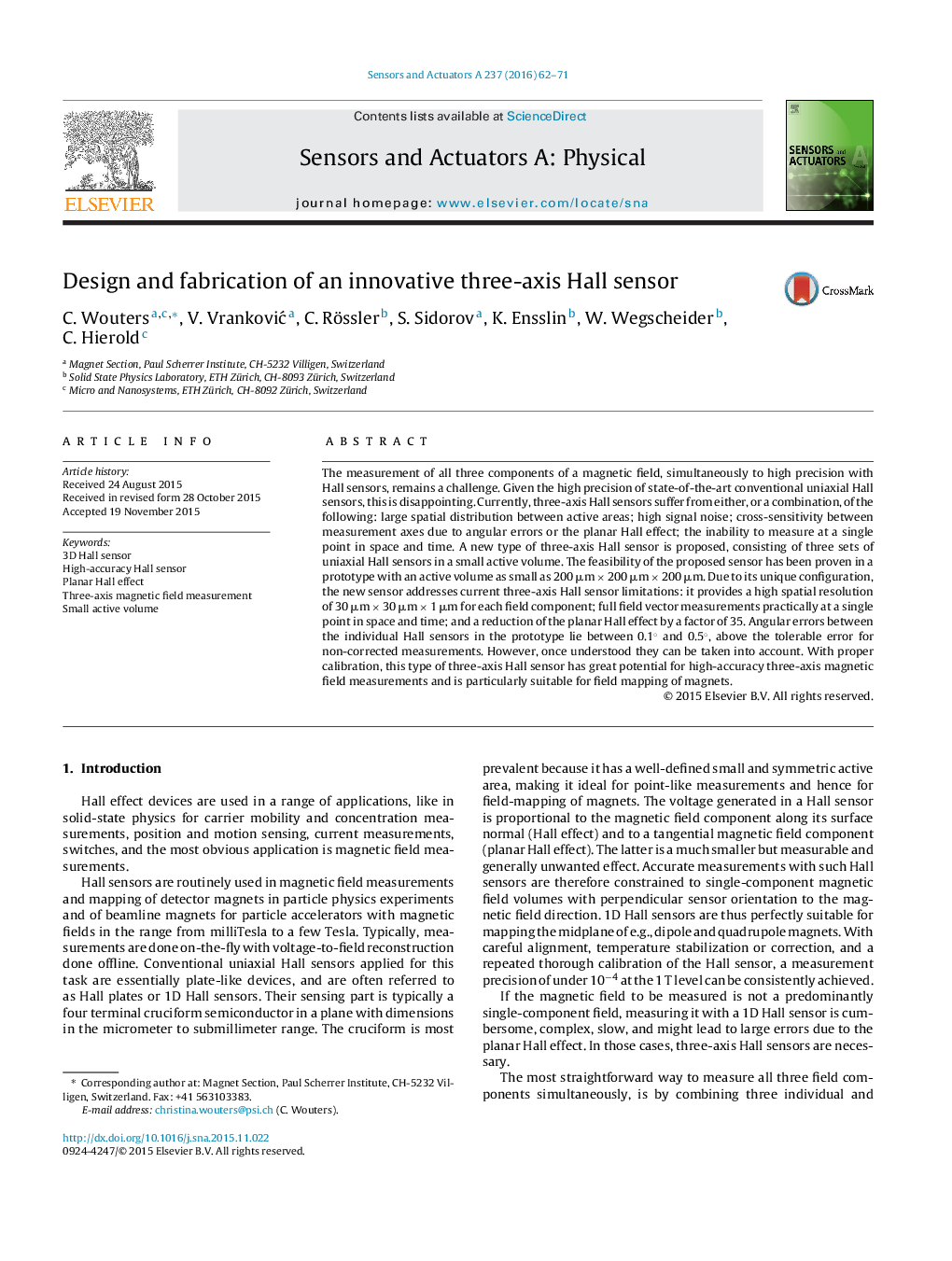| Article ID | Journal | Published Year | Pages | File Type |
|---|---|---|---|---|
| 7135317 | Sensors and Actuators A: Physical | 2016 | 10 Pages |
Abstract
The measurement of all three components of a magnetic field, simultaneously to high precision with Hall sensors, remains a challenge. Given the high precision of state-of-the-art conventional uniaxial Hall sensors, this is disappointing. Currently, three-axis Hall sensors suffer from either, or a combination, of the following: large spatial distribution between active areas; high signal noise; cross-sensitivity between measurement axes due to angular errors or the planar Hall effect; the inability to measure at a single point in space and time. A new type of three-axis Hall sensor is proposed, consisting of three sets of uniaxial Hall sensors in a small active volume. The feasibility of the proposed sensor has been proven in a prototype with an active volume as small as 200 μm Ã 200 μm Ã 200 μm. Due to its unique configuration, the new sensor addresses current three-axis Hall sensor limitations: it provides a high spatial resolution of 30 μm Ã 30 μm Ã 1 μm for each field component; full field vector measurements practically at a single point in space and time; and a reduction of the planar Hall effect by a factor of 35. Angular errors between the individual Hall sensors in the prototype lie between 0.1° and 0.5°, above the tolerable error for non-corrected measurements. However, once understood they can be taken into account. With proper calibration, this type of three-axis Hall sensor has great potential for high-accuracy three-axis magnetic field measurements and is particularly suitable for field mapping of magnets.
Keywords
Related Topics
Physical Sciences and Engineering
Chemistry
Electrochemistry
Authors
C. Wouters, V. VrankoviÄ, C. Rössler, S. Sidorov, K. Ensslin, W. Wegscheider, C. Hierold,
